Planning to visit the Borghese Gallery on your next trip to Rome?
If you are an art lover, there’s a lot of fabulous art in Rome that you can view without forking over a penny. Rome’s many churches contain a wealth of art masterpieces.
But there’s one museum with an entrance fee I think you should definitely visit, and that is the Galleria Borghese. Visiting this museum is one of the best things to do in Rome.
Read on to get the scoop on why you should visit the Borghese Gallery, and tips for the best experience.
The Borghese Gallery has a fascinating history, and the collection is stunning.
But best of all, it is a fabulous viewing experience and a must on any Rome itinerary.
Essentially the result of one man’s quest to gather together a significant private collection, today the Borghese Gallery is a museum owned by the Italian government, with its treasures available for all to enjoy.
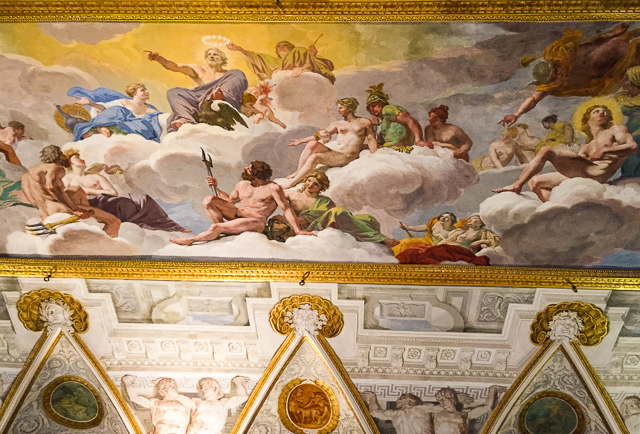
Some links on this page may be affiliate links. If you click an affiliate link and make a purchase, we may receive a small commission, at no extra cost to you. For more details, refer to our disclosure.
EVERYTHING YOU NEED TO KNOW TO VISIT THE BORGHESE GALLERY
You can’t just walk up to the ticket window at the Borghese Gallery, buy your ticket, and walk in. Unless you happen to be very lucky.
If you want to be sure of getting in when you want, you have to learn a little bit about how admission to the Borghese is structured.
Here’s everything you need to know about visiting the Borghese Gallery:
Where is the Borghese Gallery located?
The Borghese Gallery is housed in the Villa Borghese Pinciana, at Piazzale Scipione Borghese, 5, 00197 Roma RM, Italy. It is a little outside the historic center, surrounded by the gorgeous Borghese Gardens, a haven of peace and quiet.
What are the Borghese Gallery hours?
The gallery is open from 9.00 a.m. to 7 p.m. every day from Tuesday to Sunday. Last entrance is at 5.45 p.m. Apart from Mondays, the Borghese Gallery is also closed on December 25 and January 1.
If you have a reservation for the 9.00 a.m. slot, arrive at 8.30 a.m. to stand in line for your tickets.
How do you get to the Borghese Gallery?
You can walk from the historical center of Rome to the Galleria Borghese. From the Spanish Steps, it is about a 20-minute walk to the Borghese Gallery through the park.
You can also use public transportation to get to the Borghese, or take a taxi, depending on your start point. We took a taxi to the gallery but walked back through the Borghese gardens to the Piazza del Popolo.
How much are the tickets to the Borghese Gallery?
Standard admission to the Borghese Gallery is 13 euros. Plus there is a reservation fee of 2 euros per ticket. Reservations are mandatory.
Teachers, and young adults (between 18 and 25 years), from the European Union, Norway, Iceland, Liechtenstein, and Switzerland, are eligible for a discounted admission fee of €6.50, plus the reservation fee of €2.00.
Children, disabled persons from these areas, and certain other groups such as journalists with official cards are not charged the admission. Everyone has to pay the reservation fee to secure a mandatory reservation.
Admission is free on the first Sunday of every month, but you still have to pay the €2.00 reservation fee.
Sometimes the gallery hosts special exhibitions, and at these times, the admission fee may be higher.
And if you are an art buff, consider a private guided tour of the Storage Room at the Borghese, where you can see 250 additional paintings! Two one-hour visits are offered every day the gallery is open, for up to 18 persons per group. E-mail info(at)tosc(dot)it for more information.
The Borghese Gallery participates in the Roma Pass program, so if you plan to buy the pass for your Rome visit and use it for the Borghese Gallery, make sure you still do your reservation ahead of time by calling +39 06 32810.
Are audio guides or guided tours to the Borghese Gallery available?
Audio guides are available in English as well as Italian, French, German, and Spanish, and can be rented in the basement level of the museum. The cost of the audio guide is €5.00.
I found the audio guide a good accompaniment to our tour of the museum.
For an additional fee, you can also join a group tour led by a live staff guide with commentary in Italian or English.
You can also book a guided tour. The highly rated tour by Walks of Italy includes the price of admission and is led by an art historian, who will hold you spellbound with the stories behind the art!
We highly recommend Take Walks tours. We’ve taken a few of them in Europe and every single one was a fabulous experience.
Guided tour of the gallery are also offered by Get Your Guide or by Viator. Whichever guided option you choose, your experience will be enhanced by having a live guide that imparts context to what you are viewing, and who will answer questions about the exhibits.
How do the Borghese Gallery reservations work?
Part of the pleasure of visiting the Borghese Gallery comes from the fact that the total number of visitors in any one 2-hour visit slot is capped at 360. When you reserve your tickets, you can choose and date and time slot that works best for you.
The 2-hour slots start each day the gallery is open at 9 a.m., with the last slot for the day starting at 5.00 p.m. Tickets can be bought online at the GEB ART web site, or by phone at +39 06 32810.
Buy Borghese Gallery tickets in advance online at Get Your Guide, with the freedom to cancel up to 24 hours prior to your visit.
The Borghese Gallery is one of Rome’s top attractions, and slots tend to fill up weeks in advance. If you are going to visit independently, especially during the high season months, make sure to reserve your slot at least a few weeks ahead of your visit, to avoid disappointment.
Since there is a cap on visitors, you can choose to visit at any time of day instead of having to rush first thing in the morning to beat the crowds.
We picked an afternoon slot, and walked over to Come il Latte (just a 10-minute walk from the gallery) to pick up some delicious gelato before walking back to stroll around the Borghese gardens.
More information you need for your visit
On the day of your visit, make sure you arrive at the gallery at least 30 minutes before the start time of your slot, with ID and proof of your reservation. You will need to queue up to exchange your reservation voucher for a ticket.
You have to exit the exhibits gallery exactly 2 hours after you enter. We found that 2 hours were quite adequate to view the exhibits without feeling rushed, so don’t worry about having to race to view everything.
There is a cloakroom where you are required to deposit large items, purses, backpacks, strollers, umbrellas, or other items the staff feel you cannot take into the gallery.
You can browse the book shop after your gallery visit, and refreshments are available in the cafeteria. Restroom facilities are available for ticket holders.
The exhibits are laid out over two floors. The bottom floor contains the sculptures, and the top floor the paintings.
TIP: If you want one last look at the Bernini sculptures, and the opportunity to photograph them without people in your photos, scoot back to the bottom floor for a few minutes in the last half hour of your 2-hour slot, while the bulk of the group is upstairs.
Do you need tickets for the Villa Borghese gardens?
While you need tickets for the Borghese Gallery and Museum, the gardens are absolutely free to visit. In fact, strolling these gardens is one of the best free things to do in Rome.
So do take the time to stroll the gorgeous gardens before or after your visit to the gallery!
5 REASONS WHY YOU MUST VISIT THE BORGHESE GALLERY
Now that you know all the details about how to visit the Borghese Gallery, here are the top 5 reasons why you must put a visit to the Galleria Borghese at the top of your list of things to do in Rome:
#1 Enjoy Gian Lorenzo Bernini’s stunning sculptures!
You can see Gian Lorenzo Bernini’s work all over Rome. From the baldacchino in St. Peters to the Fountain of the Four Rivers in Piazza Navona, the baroque master’s creations dazzle wherever you go in the Eternal City.
But in the Galleria Borghese, you get the special treat of seeing some of his spectacular early work.
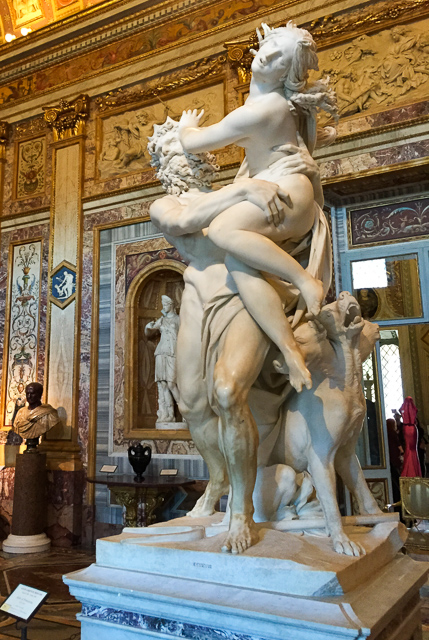
Bernini received Cardinal Scipione Borghese’s patronage from a very young age, and he produced numerous pieces for his patron.
The Galleria Borghese houses three stunning sculptures from this time. Even if you see just these three main works of Bernini in the gallery, and nothing else, you will have received your money’s worth.
PLUTO AND PROSERPINA
When you first set eyes on Pluto and Proserpina, you cannot help but be awed by Bernini’s prodigious talent. This spectacular Baroque group composition in Carrara marble was completed when he was only in his early twenties, and showcases Bernini’s penchant for drama, action, and movement, even in a scene cast in stone.
If you are not familiar with the mythological tale, Pluto, the god of the underworld, falls in love with Proserpina, the daughter of Ceres, the goddess of agriculture, and Jupiter, the god of the sky. Pluto abducts Proserpina and carries her away to his home in the underworld, where he marries her.
Eventually, he agrees to let her return to her mother for six months of the year. From spring to fall, when Proserpina is back with Ceres, the earth is full of glorious color, but when she returns to the underworld, the earth becomes barren.
Pluto is not a young figure in Bernini’s composition, but you can immediately sense his enormous strength and power in contrast to the fragility of Proserpina. Look for the famous spot where you can see Pluto’s fingers digging into Proserpina’s thigh as she tries to get free, and the tears rolling down her cheeks.
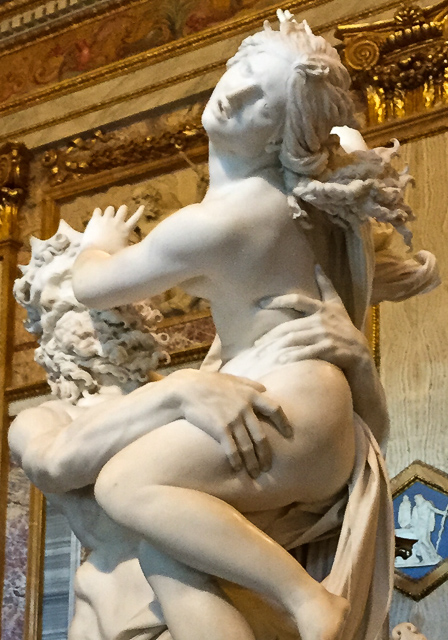
It’s incredible that Bernini was able to accomplish this level of fluidity working with marble. The intense emotions on the human faces are echoed in the wild look of Pluto’s dog three-headed Cerberus, the third figure in the group.
APOLLO AND DAPHNE
In Apollo and Daphne, Bernini dramatizes another Greek myth. Cupid, the god of love, is insulted by Apollo, the sun god. Incensed, Cupid strikes Apollo with a gold arrow, and Daphne, the daughter of a river god, with a lead arrow.
Apollo falls in love with Daphne, but Daphne, being struck with a lead arrow, rejects his advances and pleads with her father to help her get away. Her father turns her into a laurel tree, forever removing her from Apollo’s grasp.
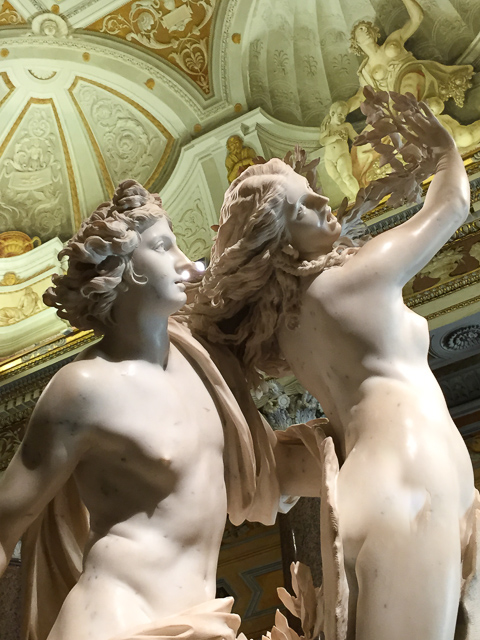
Bernini’s sculpture captures the moment when Daphne begins her metamorphosis into a tree: you can see branches and leaves on her arms, roots at her feet, and her body changing into the trunk of the tree.
As you stand in front of the masterpiece, you can’t help but be drawn into the drama and tension of the scene unfolding before you.
At eight feet tall, the sculpture is large and dramatic. It was completed at about the same time as Pluto and Proserpina and David, when Bernini was in his twenties.
DAVID
David completes of trio of Bernini’s seminal masterpieces that you must not miss at the Galleria Borghese. Bernini’s David is much different from Michelangelo’s, but just as compelling.
While Michelangelo’s David is portrayed as he is calmly contemplating his attack, Bernini’s David is captured in the throes of actually launching the deadly stone that strikes down Goliath.
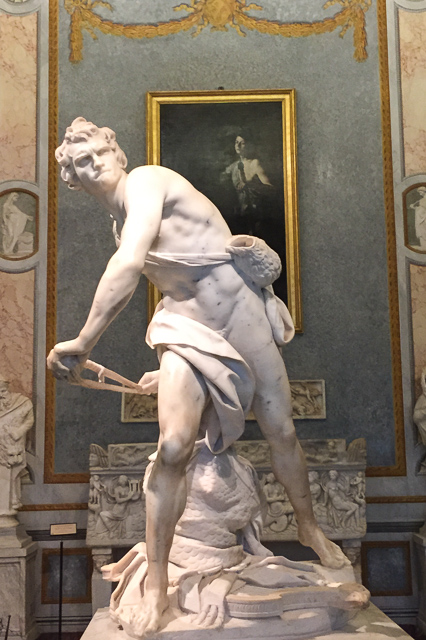
Lips pursed, brows furrowed, David is totally focused on the task at hand. Again, you are left marveling that Bernini was able to craft this degree of fluid movement and emotion when working with stone!
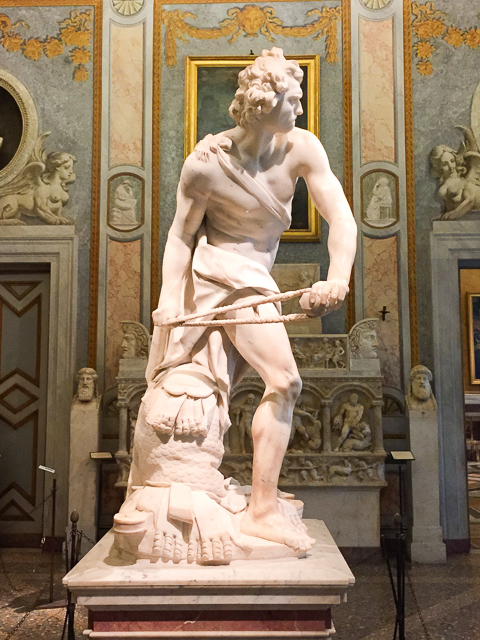
OTHER BERNINI WORKS
The Borghese Gallery contains many other works by Bernini, including busts of his patron, Cardinal Scipione Borghese, and Pope Paul V, Scipione’s uncle.
Reportedly Bernini’s original version of the bust of his patron had a crack in it, so he created a second unblemished version. You can see both at the Borghese!
The gallery also includes Bernini’s Self-Portrait as a Young Man, which shows his prowess as a painter.
Occasionally the gallery holds special exhibitions of Bernini’s work, at which times other galleries and museums around the world loan one or more of their Bernini works to the Borghese.
If you are fortunate to visit at such a time, definitely don’t miss the opportunity to see even more of this exceptional artist!
#2 Admire the works of Caravaggio
You can see famous works by Caravaggio, known as much for his brawling as for his brilliance with paint, in many places in Rome.
You can even take a Caravaggio tour in Rome. But, similar to the case of Bernini, the Borghese is special because it contains some of the Baroque master’s early works.
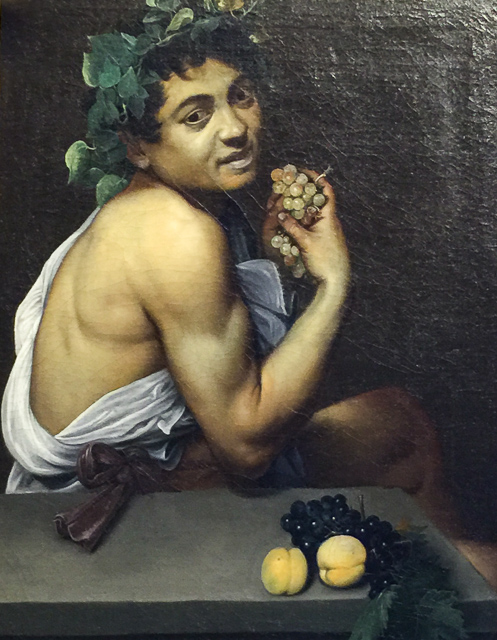
Caravaggio, like Bernini, was a favorite of Cardinal Scipione Borghese. The gallery originally contained 12 Caravaggio paintings, but now only six remain.
If you are a Caravaggio fan, you will definitely want to visit, because the six paintings here are stunning examples of Caravaggio’s use of chiaroscuro: light and shadow mastery resulting in a three-dimensional look.
Young Sick Bacchus is a self-portrait, painted by Caravaggio using a mirror, when he was extremely sick with what is now thought to be malaria. Boy with a Basket of Fruit is another early portrait by Caravaggio (of his friend Mario).
In both these works, the depiction of the fruit is astonishing in its detail and precision. I have read that so realistic is Caravaggio’s painting of horticultural elements that experts have been able to identify the fruit down to the cultivar!

At the Borghese, you can also see some of Caravaggio’s later work, such as the somber St. Jerome, the controversial Madonna and Child with St. Anne, and the graphic David with the Head of Goliath.
Some art historians opine that David and Goliath are both self-portraits: David the young unblemished Caravaggio and Goliath his older life-worn self.
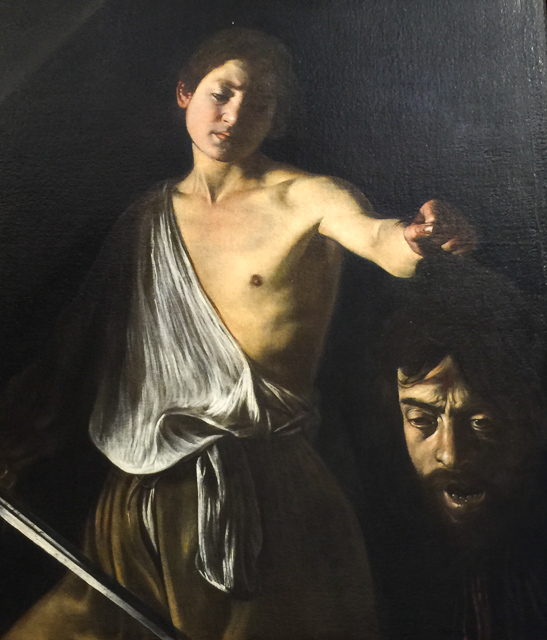
#3 View other famous works in the collection
While Bernini and Caravaggio feature prominently at the Borghese, the gallery contains many other gorgeous works.
Don’t miss Canova’s sculpture of Pauline Bonaparte, Napoleon’s younger sister and Prince Camillo Borghese’s wife, Venus Victrix.
Also admire Raphael’s Young Woman with a Unicorn and The Deposition, Jacopo Bassano’s The Last Supper, and Correggio’s Danae.
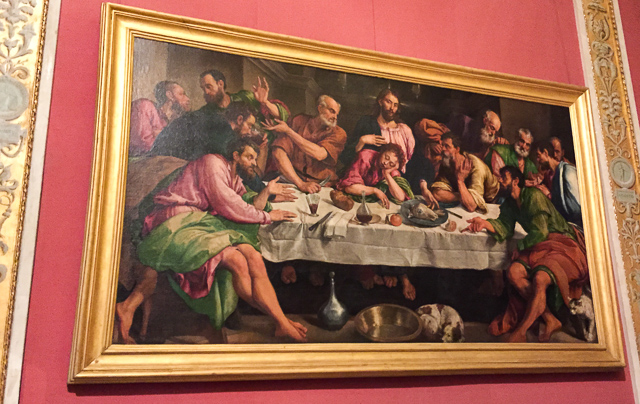
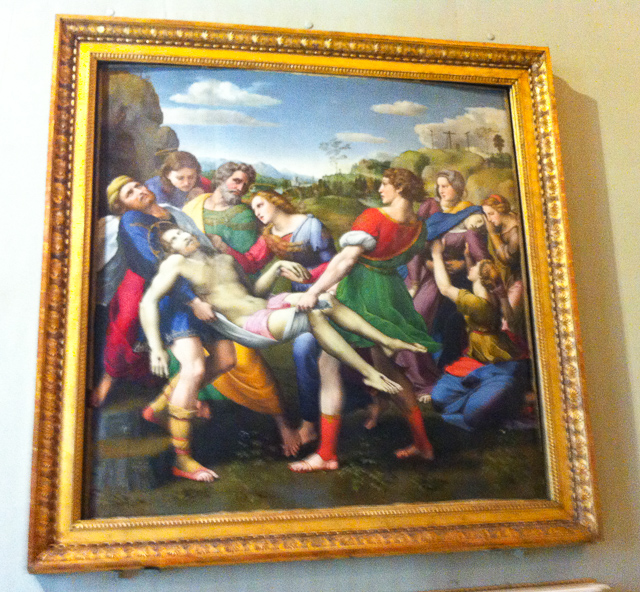
Another gem is Titian’s Sacred and Profane Love, completed early in his career. Art history experts are still trying to decipher the complex work, and reportedly the Rothschild banking family once made an offer for this single painting that was higher than the entire assessed worth of the Villa Borghese and its contents!
Yet another must-not-miss is the second century life size copy of the Sleeping Hermaphroditus, discovered in 1781. Several copies are in existence, and in fact, the copy that was originally at the Borghese was discovered in the early 1700s at Santa Maria della Vittoria and acquired by Cardinal Scipione.
Cardinal Scipione commissioned his protege Bernini to make a very real-looking mattress for the prized ancient sculpture, and set it up in its own room at the Villa Borghese. However, that copy was sold to Napoleon by Prince Camillo Borghese and is now at the Louvre.
#4 Relish the history and the setting
Not only is the Borghese Gallery a home for some spectacular works of art, it comes with a history and setting to match!
Cardinal Scipione Borghese, who amassed the collection, used every means at his power to make it one of the most extensive and best private art collections in Europe.
The intrigue, drama, and political machinations that sometimes went into the acquisitions for the collection are fascinating!
The Borghese family, originally from Siena in Tuscany, moved to Rome in the 16th century. When Scipione’s uncle Camillo Borghese became Pope in 1605, he made Scipione, then only in his late 20s, a cardinal.
Cardinal Scipione acted as the Pope’s secretary and the de facto head of the Vatican government, with enormous powers. He was also in charge of the finances, both for the papacy, and the Borghese family.
Through papal fees and taxes, Cardinal Scipione amassed a lot of wealth, both for himself and the Pope. He used a lot of his wealth to acquire art. With a keen eye for talent, he became an early patron of greats such as Bernini and Caravaggio.
The Cardinal is believed to have sometimes used less than honorable means to further his collection.
For example, Raphael’s masterpiece, The Deposition, was reportedly stolen on his behalf from the family chapel of the Baglioni family in a church in Perugia.
Some of the Caravaggio paintings now in the gallery were seized by the Pope from Giuseppe Cesari, for whom Caravaggio worked in his early years. Cesari apparently had not paid his taxes in full.
The Borghese family ran into financial troubles in the 19th century. Prince Camillo Borghese was forced to sell several pieces from the collection to his brother-in-law, Napoleon Bonaparte. These works are now housed in the Louvre as the Borghese Collection.
In 1902, the property, including the Borghese Gallery, was bought by the Italian government, moving the collection from the private domain to the public.
THE VILLA BORGHESE: A STUNNING SETTING
The beautiful building in which the Borghese Gallery is housed was commissioned by Cardinal Scipione Borghese in 1613. It was designed by Flaminio Ponzio, who also oversaw the construction until his death.
The structure was eventually completed by Giovanni Vasanzio. It stands in one corner of the public park known as the Villa Borghese.
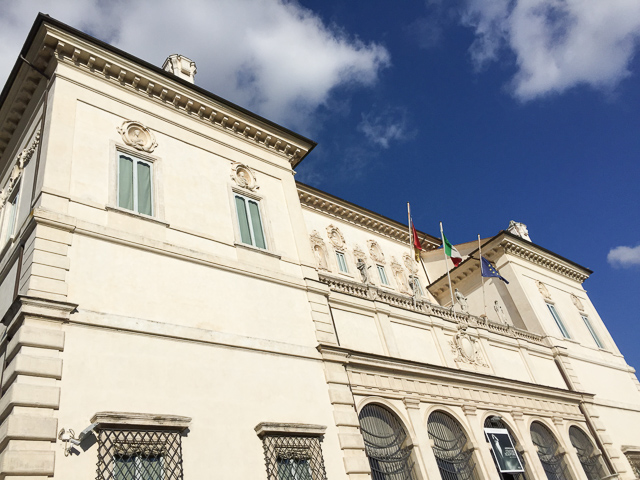
The landscape gardens, laid out as formal gardens on the site of the original vineyard, were redesigned in the naturalist English style in the 19th century.
The park includes several villas, and is the third largest park in Rome. From the park, you can conveniently access the historical center via the Spanish Steps or the steps going down into the Piazza del Popolo.
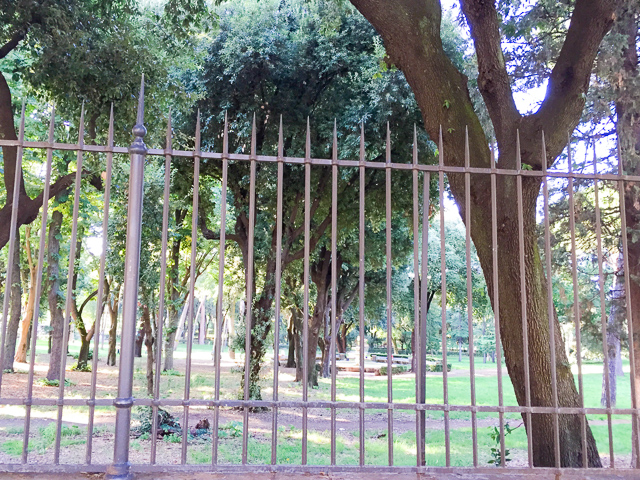
#5 Savor the experience
The Borghese Gallery was easily the highest quality museum experience we had during our three-week Italy trip (our first ever visit to the country!), because the number of visitors is capped during the time period you are in the museum.
Yes, the Vatican is a must-visit in Rome, for its amazing collection of art, including the Sistine Chapel, but you have to admit that as an experience, it is not very comfortable or pleasurable.
If you are even the tiniest bit claustrophobic, you will have a very difficult time with the crowds in the Vatican.
We did an early entry tour that enabled us to view the Sistine Chapel ceiling in relative comfort, but as we progressed through the rooms, the Museums became more and more crowded.
When we were in the Raphael rooms, I almost passed out from the sheer closeness of the atmosphere, with so many people crammed in like sardines.
In contrast, at the Borghese, you can take your time at each exhibit without feeling guilty about holding up other people. You can walk around the Bernini sculptures (you must, in fact, walk around them to appreciate them from every angle, even though they were made to be viewed from one).
You can examine the finer details, appreciate the expressions, and even discuss what you are seeing with your companions in quiet tones.
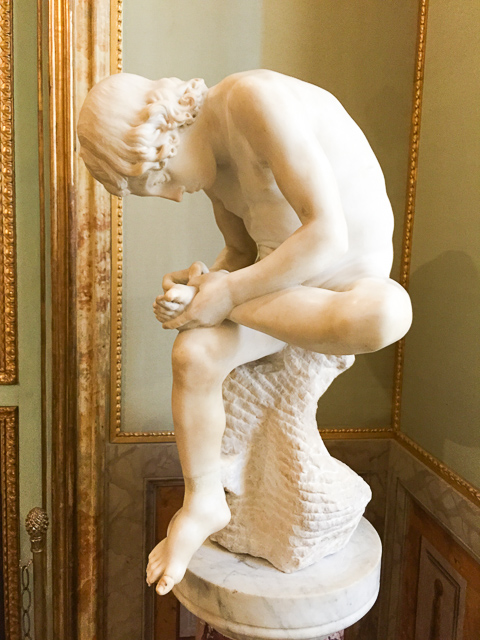
After we completed our viewing of the exhibits on both floors, we were able to walk back to spend a little more time with our favorite pieces, and take more photos.
It was, overall, a truly luxurious viewing experience that left us saying “Wow”! When we visit Rome again, we will not hesitate to return for another visit to the Borghese Gallery.
So there you have it: my take on why the Borghese Gallery should have a prominent place in your list of things to do in Rome. Have you visited?
I would love to know what you thought of the experience: comment below to respond! If you haven’t yet, I hope I have inspired you to consider adding it to your itinerary for your visit to the Eternal City.
MORE FUN DESTINATIONS IN ITALY
Florence: 10 Best Things to do on Your First Visit to Florence
Val d’Orcia: Driving the Val d’Orcia for a Taste of La Dolce Vita in Tuscany
Siena: One Day in Siena, Tuscany: What to See and Do
Amalfi Coast: Driving the Amalfi Coast of Italy
Capri: One Day in Capri: What to See and Do
Venice: How to Spend Two Perfect Days in Venice
Cinque Terre: Two Magical Days in the Cinque Terre
MORE ADVENTURES AROUND THE WORLD
Poland: A Self-Guided Walking Tour of Gdansk Old Town
USA: 10 Best Day Trips from Las Vegas You Must Do!
Canada: The Best Things to Do in Lake Louise
Denmark: One Amazing Day in Copenhagen
Norway: How to Spend One Perfect Day in Bergen
Spain: A 3-Day Guide to Seville
Did you find this article informative? Pin it for later reference!
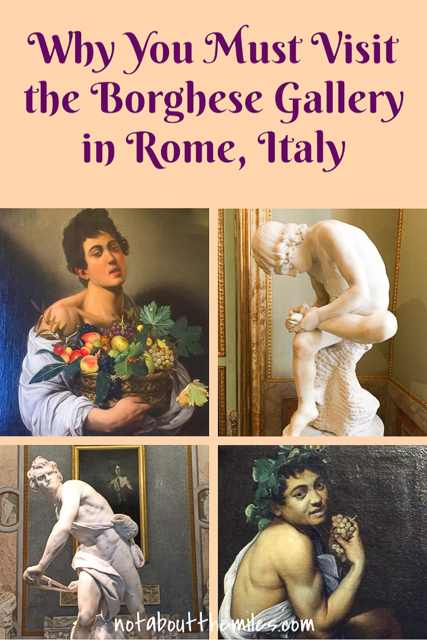


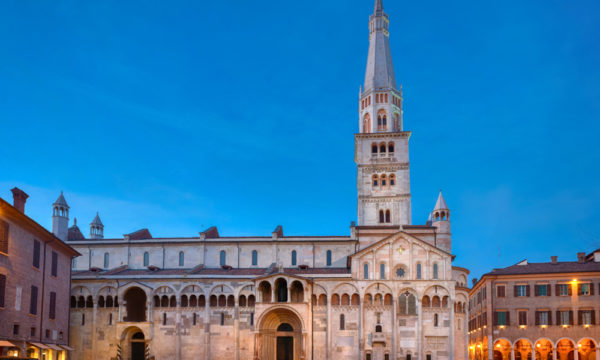
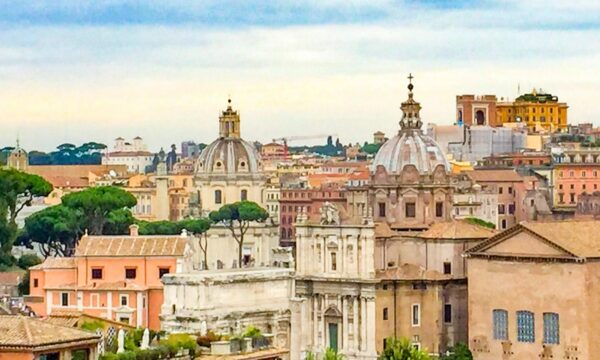

Borghese is a beautiful place and these are good tips for going. Bernini’s work is stunning.
It is indeed! I loved both Bernini and Caravaggio at the Borghese.
You have me sold. Definitely doing this whenever I am in Rome next. Thanks for this very detailed, and convincing guide. I know little about art but I do know Bernini and those sculptures look worth the time for sure.
Bernini’s works here are indeed gorgeous. I hope you do visit!
We ran out of time and didn’t see the Borghese …. still the perfect excuse to return!
Definitely worth doing when you return to Rome!
This is an amazing post, so informative and educational. I am visiting Rome in May, I will try and make time to go to this gallery as the works you discuss here are wonderful. Thanks so much for the inspiration.
I hope you do visit. A lovely way to spend two hours amidst art treasures!
We missed this on our first trip to Rome but it’s definitely on the list now. Thanks.
You will love the Borghese, Ruth. I hope you get to visit.
Thank-you for a really interesting and helpful commentary about the Borghese Gallery! I visited in my younger days but haven’t been back for ages and am inspired to return, the Bernini sculptures are stunning and Caravaggio was such an icon of realism and the use of light. I loved the gardens too – it is well worth a return visit!
Thanks for reading, Roz! I loved the Borghese, because it was a manageable size and I could appreciate each piece without feeling overwhelmed. I hope you get to return!